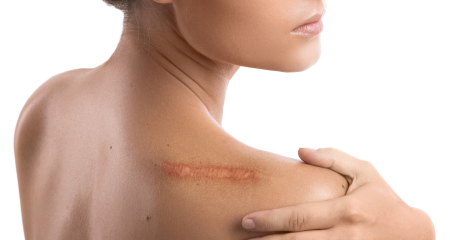
The specialists at Northstar Dermatology are experienced in the treatment and removal of keloid scars.
Keloids appear as raised or rough scars and can grow to form lumps, ridges, or nodules on the skin. Some keloid scars can become tender, itchy, or painful and therefore may justify treatment or removal. To discuss treatment options for a keloid scar, contact our office today
A keloid scar is an overgrowth of scar tissue which occurs after a surgical procedure, piercing or injury to the skin. Keloid scars can affect all types of individuals, but are most commonly seen in those with darker skin tones. Keloid scars are not harmful, but they can become bothersome or painful, or grow excessively
and become aesthetically unpleasing.
Keloid scars are often treated with steroid injections to calm the inflammation and help shrink the size of the scar. A series of repeated injections is typically necessary to achieve optimum results. Other medications may also be injected if the keloid does not respond to the corticosteroid. Alternatively, keloids can be surgically removed. It is important to know that keloids are very likely to reappear after surgical removal since keloids are caused by trauma to the skin. Your dermatologist may recommend a series of steroid injections to the area to help reduce the risk of reoccurrence.
To discuss treatment options for a keloid scar, contact our office today.
